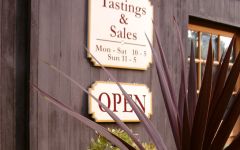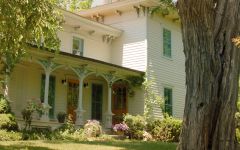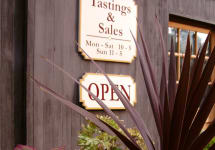Hermann J. Wiemer HJW Vineyard Riesling 2020
-
James
Suckling -
Robert
Parker -
Wine
Enthusiast -
Wine &
Spirits



Product Details
Your Rating
Somm Note
Winemaker Notes
#45 Wine Spectator Top 100 of 2022
The HJW Vineyard is where it all began. On a bench of land seven hundred feet above Seneca Lake, Hermann planted the estate's first Riesling vines in 1977. The site's cooler mesoclimate shows through with racy acidity underpinned by a dense mineral backbone.
Professional Ratings
-
James Suckling
This has a breathtaking array of stone-fruit, mandarin-orange and honeysuckle aromas, but that’s just the beginning of this exceptionally elegant dry riesling. The most exciting things about it creeps up on you, the power and concentration building and building through the very long, delicate finish.
-
Robert Parker's Wine Advocate
The 2020 Riesling HJW Vineyard comes in with six grams of residual sugar and 12.5% alcohol. This was sourced from HJW vines planted in 1977. This takes the Flower Day Riesling, which is sourced from the younger 2009 vines at HJW, and adds concentration, plus a more unctuous texture while retaining a fairly crisp demeanor relative to what I'm seeing in this group of 2020s. The mouthfeel suggests depth and there are hints of complexity to come. This might be the most nuanced of Wiemer's wines in this report. Plus, some six hours later, it did a better job of pulling in its parts and showing off its structure. It began to look a bit more like the 2019 and also like one of the nicest winners for Wiemer in 2020, with an excellent chance of improving over the next several years.
-
Wine Enthusiast
Coiled aromas of yuzu, limestone and white blossoms give this dry Riesling an air of pent-up energy on a nose that's waiting to explode. The medium-bodied palate delivers tense flavors of citrus peels and crushed stone matched by heady field blossoms, all while juicy apple and peach accents peak out their heads. A gentle grip of white tea, along with well-honed acidity, lend structure and length to it all.
-
Wine & Spirits
Showing plenty of potential at the moment, this vintage of HJW is dry and lean with a salty scent and fruit/herb aromas of apple and celery. The fl avors are on point, with great focus and concentration; it will likely have more to say after six months in the cellar.
Other Vintages
2021-
Wine
Enthusiast -
Wine &
Spirits -
Robert
Parker
-
Robert
Parker -
Wine
Enthusiast -
James
Suckling
-
James
Suckling -
Wine
Enthusiast -
Robert
Parker -
Wine &
Spirits
-
James
Suckling -
Wine
Spectator -
Robert
Parker -
Wine
Enthusiast -
Wine &
Spirits
-
Wine
Enthusiast -
James
Suckling
-
James
Suckling -
Wine
Enthusiast -
Wine
Spectator







Hermann Wiemer was born in Bernkastel, Germany into a family with 300 years experience in making the distinguished vinifera wines of the Mosel Valley. He arrived in the United States in 1968 already well versed in the European tradition of fine winemaking. To this heritage he added the skill of grafting fragile vinifera vines onto sturdy American rootstock.
In 1973 he bought 140 acres on the west side of Seneca Lake, which he planted with a variety of European vinifera grapevines. Visitors who wish to see these vines, along with ponds and the six acre nursery, can take the popular Vineyard Walk through the property.
The Winery, which produces 12,000 cases each year, was designed in 1982 by an award winning team of Cornell architects. Enclosed within the shell of a seventy-year-old scissor-trussed barn, it accommodates a laboratory, tasting and retail sales, a wine production area and a private tasting room. Its unique white cathedral-like interior counterpoints the bare wooden walls and sleek Italian stainless steel tanks.

Riesling possesses a remarkable ability to reflect the character of wherever it is grown while still maintaining its identity. A regal variety of incredible purity and precision, this versatile grape can be just as enjoyable dry or sweet, young or old, still or sparkling and can age longer than nearly any other white variety. Somm Secret—Given how difficult it is to discern the level of sweetness in a Riesling from the label, here are some clues to find the dry ones. First, look for the world “trocken.” (“Halbtrocken” or “feinherb” mean off-dry.) Also a higher abv usually indicates a drier Riesling.

As the most historic wine-producing region in New York state, winemaking in the Finger Lakes area dates back to the 1820s and today as a region, accounts for 90% of the state’s total wine production.
Its narrow and deep lakes created by the movement of Ice Age glaciers create an environment similar to the classic Riesling-loving regions of Europe, namely Germany and Austria. The Finger Lakes retain summer heat that incidentally warms up cold winter air, making it fall down from the lakes’ steep slopes. When spring comes, the lakes, already cooled by cold winter weather, stave off vine budding until the danger of frost has subsided. The main lakes of the zone, that is those big enough to moderate the climate in this way, are the focal points of prime vineyard areas. They include Canandaigua, Keuka, Seneca and Cayuga.
While Riesling has fueled most of the region’s success, today Pinot Noir and Cabernet Franc enjoy some attention.
